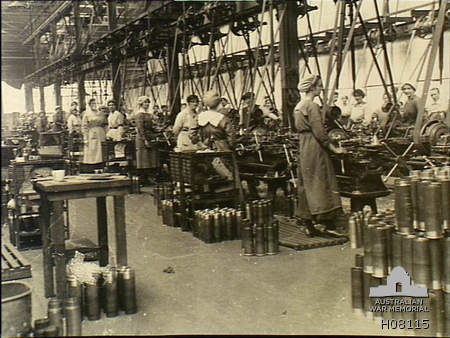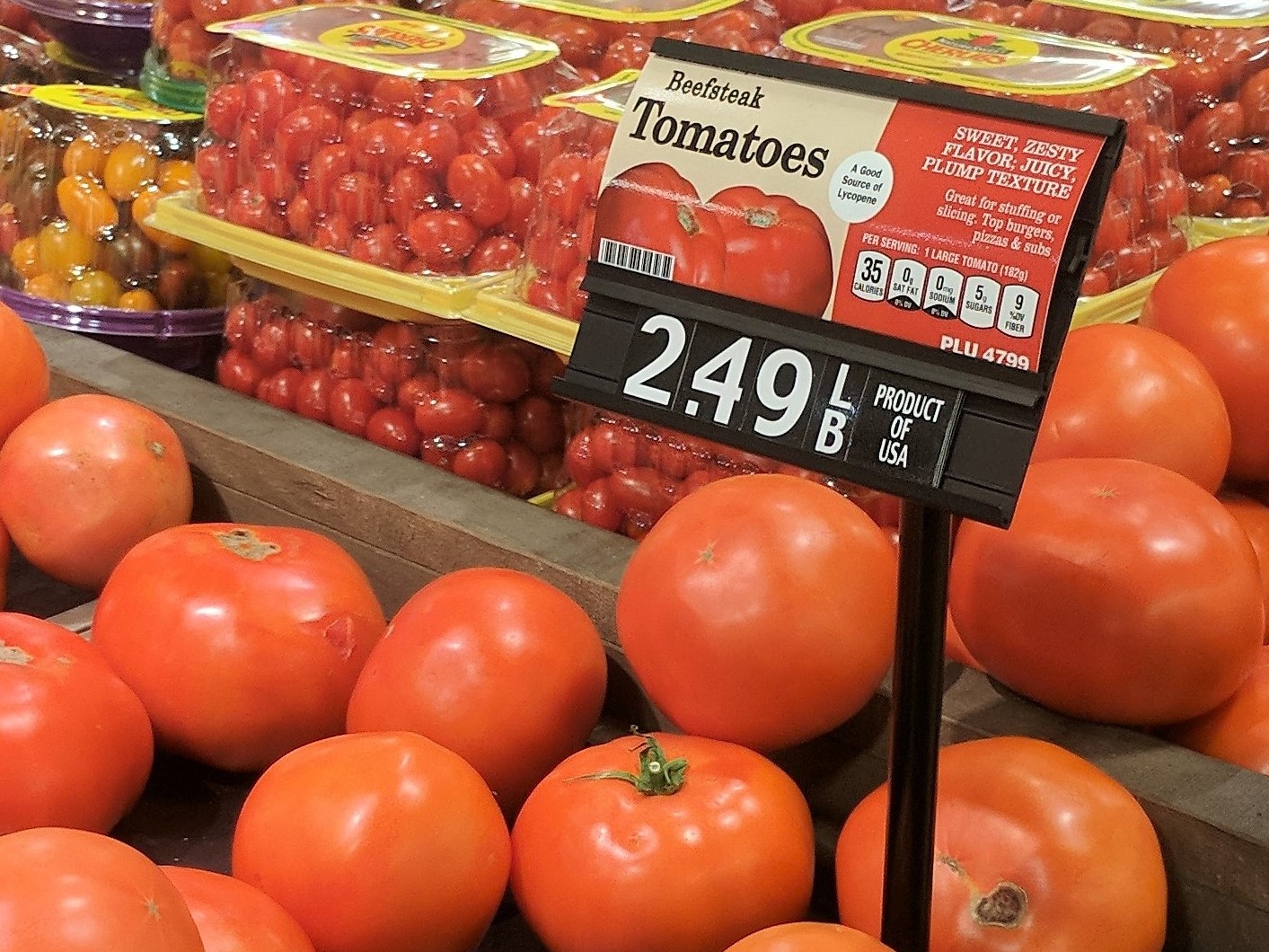|
Munitionettes
Munitionettes were British women employed in munitions factories during the time of the First World War. History Early in the war, the United Kingdom's munitions industry found itself having difficulty producing the amount of weapons and ammunition needed by the country's armed forces. In response to the crisis, known as the Shell Crisis of 1915, the British government passed the Munitions of War Act 1915 to increase government oversight and regulation of the industry. The newly created Ministry of Munitions regulated wages, hours and employment conditions in munitions factories. It also forced the factories to admit more women as employees, because so many of the nation's men were engaged in fighting in the war and male labour was in short supply. Historian Angela Woollacott has estimated that approximately one million women were working in munitions industries by mid 1918. She suggests that a greater number of women worked in munitions than in the Voluntary Aid Detachment, the ... [...More Info...] [...Related Items...] OR: [Wikipedia] [Google] [Baidu] |
Shell Crisis Of 1915
The Shell Crisis of 1915 was a shortage of artillery shells on the front lines in the First World War that led to a political crisis in the United Kingdom. Previous military experience led to an over-reliance on shrapnel to attack infantry in the open, which was negated by the resort to trench warfare, for which high-explosive shells were better suited. At the start of the war there was a revolution in doctrine: instead of the idea that artillery was a useful support for infantry attacks, the new doctrine held that heavy guns alone would control the battlefield. Because of the stable lines on the Western Front, it was easy to build railway lines that delivered all the shells the factories could produce. The 'shell scandal' emerged in 1915 because the high rate of fire over a long period was not anticipated and the stock of shells became depleted. The inciting incident was the disastrous Battle of Aubers, which reportedly had been stymied by a lack of shells. The shortage was wid ... [...More Info...] [...Related Items...] OR: [Wikipedia] [Google] [Baidu] |
The Gretna Girls
The Gretna Girls was a collective nickname given to women munition workers at HM Factory Gretna in World War One. Women came from all over the United Kingdom to work at the factory, but many were drawn from the surrounding areas of Scotland and Northern England. Working in munitions The Gretna Girls were a small part of the one million women who worked in munitions during World War One. The makeup of The Gretna Girls reflected the countrywide trends for munitions workers: the majority were working class young women. However, as Chris Brader points out, unusually for Government factories, munition workers at Gretna came from an even younger demographic—a large proportion was under eighteen years of age. There were no creche facilities at Gretna, unlike other munition factories. The highest number of women employed at the factory was 11,576 in 1917, but this figure dropped to 6,285 by October 1918. Impact on the local area The influx of workers to the factory led to the bui ... [...More Info...] [...Related Items...] OR: [Wikipedia] [Google] [Baidu] |
Fair Wages Clause
A fair (archaic: faire or fayre) is a gathering of people for a variety of entertainment or commercial activities. Fairs are typically temporary with scheduled times lasting from an afternoon to several weeks. Types Variations of fairs include: * Art fairs, including art exhibitions and arts festivals * County fair (USA) or county show (UK), a public agricultural show exhibiting the equipment, animals, sports and recreation associated with agriculture and animal husbandry. * Festival, an event ordinarily coordinated with a theme e.g. music, art, season, tradition, history, ethnicity, religion, or a national holiday. * Health fair, an event designed for outreach to provide basic preventive medicine and medical screening * Historical reenactments, including Renaissance fairs and Dickens fairs * Horse fair, an event where people buy and sell horses. * Job fair, event in which employers, recruiters, and schools give information to potential employees. * Regional or state fair, an ... [...More Info...] [...Related Items...] OR: [Wikipedia] [Google] [Baidu] |
Living Wage
A living wage is defined as the minimum income necessary for a worker to meet their basic needs. This is not the same as a subsistence wage, which refers to a biological minimum, or a solidarity wage, which refers to a minimum wage tracking labor productivity. Needs are defined to include food, housing, and other essential needs such as clothing. The goal of a living wage is to allow a worker to afford a basic but decent standard of living through employment without government subsidies. Due to the flexible nature of the term "needs", there is not one universally accepted measure of what a living wage is and as such it varies by location and household type. A related concept is that of a family wage – one sufficient to not only support oneself, but also to raise a family. The living wage differs from the minimum wage in that the latter can fail to meet the requirements for a basic quality of life which leaves the worker to rely on government programs for additional income. Livi ... [...More Info...] [...Related Items...] OR: [Wikipedia] [Google] [Baidu] |
Food Prices
Food prices refer to the average price level for food across countries, regions and on a global scale. Food prices have an impact on producers and consumers of food. Price levels depend on the food production process, including food marketing and food distribution. Fluctuation in food prices is determined by a number of compounding factors. Geopolitical events, global demand, exchange rates, government policy, diseases and crop yield, energy costs, availability of natural resources for agriculture, food speculation, changes in the use of soil and weather events have a direct impact on the increase or decrease of food prices. The consequences of food price fluctuation are multiple. Increases in food prices, or agflation, endangers food security, particularly for developing countries, and can cause social unrest. Increases in food prices is related to disparities in diet quality and health, particularly among vulnerable populations, such as women and children. Food prices will o ... [...More Info...] [...Related Items...] OR: [Wikipedia] [Google] [Baidu] |
National Shell Filling Factory, Chilwell
The National Shell Filling Factory, Chilwell, was a World War I United Kingdom Government-owned explosives Filling Factory. Its formal title was National Filling Factory No. 6. It was located near Chilwell, at that time a village, in Nottinghamshire on the main road from Nottingham to Ashby de la Zouch. During the Great War it filled some 19 million shells with high explosives. Foundation of the Shell Filling Factory The factory was created as a result of the Shell Crisis of 1915. At the beginning of World War I shells were filled with Lyddite, but this needed imported raw materials, and so trinitrotoluene (TNT) was adopted. TNT was expensive to make and was in short supply, so Amatol, a mixture of various proportions of TNT and Ammonium nitrate, was adopted instead. On 20 August 1915 Godfrey Chetwynd, 8th Viscount Chetwynd, was given the task of designing, building and superintending the running of a factory to fill large-calibre shells with Amatol. He requisitioned the servic ... [...More Info...] [...Related Items...] OR: [Wikipedia] [Google] [Baidu] |
Silvertown Explosion
The Silvertown explosion occurred in Silvertown in West Ham, Essex (now part of the London Borough of Newham, in Greater London) on Friday, 19 January 1917 at 6:52 pm. The blast occurred at a munitions factory that was manufacturing explosives for Britain's First World War military effort. Approximately of trinitrotoluene (TNT) exploded, killing 73 people and injuring 400 more, as well as causing substantial damage in the local area. This was not the first, last, largest, or the most deadly explosion at a munitions facility in Britain during the war; an explosion at Faversham involving of TNT killed 105 in 1916, and the National Shell Filling Factory, Chilwell, exploded in 1918, killing 137. Operations The factory was built in 1893 on the south side (River Thames side) of North Woolwich Road (now the A1020, nearly opposite Mill Road) by Brunner Mond, a forerunner of Imperial Chemical Industries, to produce soda crystals and caustic soda. Production of caustic soda ... [...More Info...] [...Related Items...] OR: [Wikipedia] [Google] [Baidu] |
Barnbow
Barnbow was a small settlement situated near the city of Leeds in the township and parish of Barwick in Elmet. The site is noted as the location of a munitions factory founded during the First World War. It was officially known as National Filling Factory No. 1. In 1916 a massive explosion killed 35 of the women who worked there. Etymology The name ''Barnbow'' is first attested in the period 1185-93 in the unique form ''Barnesburc'' and in the form ''Barnebu'', which is more representative of later attestations. The name comes from the Old Norse personal name ''Bjarni'' and the word ''bú'' ('homestead, estate'). Thus, when coined, the name meant 'Bjarni's homestead'. However, the name was by the thirteenth century sometime reinterpreted as including the word ''bow'' (from Old Norse ''bogi'' and/or Old English ''boga''), which influenced its present form. Barnbow munitions factory After the declaration of war with Germany in August 1914, there was suddenly an urgent need for lar ... [...More Info...] [...Related Items...] OR: [Wikipedia] [Google] [Baidu] |
Explosives
An explosive (or explosive material) is a reactive substance that contains a great amount of potential energy that can produce an explosion if released suddenly, usually accompanied by the production of light, heat, sound, and pressure. An explosive charge is a measured quantity of explosive material, which may either be composed solely of one ingredient or be a mixture containing at least two substances. The potential energy stored in an explosive material may, for example, be * chemical energy, such as nitroglycerin or grain dust * pressurized gas, such as a gas cylinder, aerosol can, or BLEVE * nuclear energy, such as in the fissile isotopes uranium-235 and plutonium-239 Explosive materials may be categorized by the speed at which they expand. Materials that detonate (the front of the chemical reaction moves faster through the material than the speed of sound) are said to be "high explosives" and materials that deflagrate are said to be "low explosives". Explosives may al ... [...More Info...] [...Related Items...] OR: [Wikipedia] [Google] [Baidu] |
Nitric Acid
Nitric acid is the inorganic compound with the formula . It is a highly corrosive mineral acid. The compound is colorless, but older samples tend to be yellow cast due to decomposition into oxides of nitrogen. Most commercially available nitric acid has a concentration of 68% in water. When the solution contains more than 86% , it is referred to as ''fuming nitric acid''. Depending on the amount of nitrogen dioxide present, fuming nitric acid is further characterized as red fuming nitric acid at concentrations above 86%, or white fuming nitric acid at concentrations above 95%. Nitric acid is the primary reagent used for nitration – the addition of a nitro group, typically to an organic molecule. While some resulting nitro compounds are shock- and thermally-sensitive explosives, a few are stable enough to be used in munitions and demolition, while others are still more stable and used as pigments in inks and dyes. Nitric acid is also commonly used as a strong oxidizing agen ... [...More Info...] [...Related Items...] OR: [Wikipedia] [Google] [Baidu] |







